Newtown Castle
Houses within 15km of this house
Displaying 30 houses.
Houses within 15km of Newtown Castle
Displaying 30 houses.
| House name | Description | |
|---|---|---|
| Doorus House | Dooras House was built by the French family in the 18th century. At the time of Griffith's Valuation Count de Basterot was leasing this property from Henry Comerford. In 1906 Count de Basterot was the owner of a mansion house valued at £10 here. O'Connell records that the house was demolished about 1917-18. | |
| Newtown Lynch | O'Connell states that Newtown was built around 1795. At the time of Griffith's Valuation the townland of Doorus Park was part of the estate of Patrick Lynch of Renmore. John W. Lynch is recorded as the owner of this mansion house, valued at £13, in 1906. On the Ordnance Survey maps it is labelled Newtown House. It has been in ruins since the 1930s. |

|
| Hermitage or Neptune | O'Connell states that this house was originally built by Dr. Nicholas Archdeacon, probably about 1805-6. It was later the property of the Blake family and in 1862 the house was known as Hermitage House and was the residence of Francis Blake Forster. It has been in ruins since the mid-20th century. |
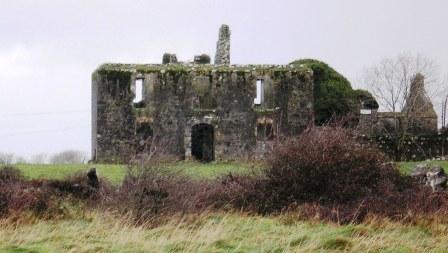
|
| Roo | The original Roo House was a single story L-shaped building. Only a small portion, which has been incorporated into farm buildings, now remains. Tradition indicates that it was leased by Bishop Nicholas Archdeacon sometime in the early 19th century. In the 1830s it was the residence of a Mr. Sellers. The house and over 100 acres was leased by the Curtin family from the Gregory estate in the 1840s but the Gregorys were later obliged to sell this part of the estate. A two-story house, now derelict, was erected on the site in the early 20th century. The property is still held by the Curtin family. |

|
| Rineen | The property at Rineen was leased to Daniel O'Dea by Henry Comerford at the time of Griffith's Valuation. It was valued at £26 and included a mill. The National Inventory of Architectural Heritage suggests it was built c.1804 by Count de Basterot. It is now a ruin. |
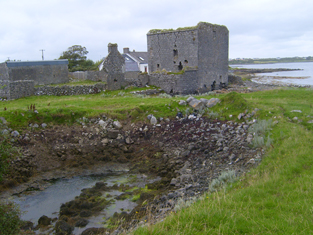
|
| Neptune Vale | O'Connell states that Neptune Vale was the original de Basterot house in the Kinvara area, probably built in the late 18th century. The house was demolished sometime in the mid-19th century although at the time of Griffith's Valuation, it was still owned by Count de Basterot and valued at £4. One of the outbuildings was possibly subsequently converted into a dwelling house. | |
| Doorus Cottage | O'Connell states that Doorus Cottage was built by the de Basterot family in the 1860s, possibly with materials from the demolished Neptune Vale. It had several owners before being given to An Oige in 1961 as a youth hostel. |

|
| Harbourhill Lodge | Marked as Habourhill Lodge on the first Ordnance Survey map, this house was occupied by the Reverend Michael O'Fea at the time of Griffith's Valuation and held from John Bindon Scott. It later became a Constabulary barracks, now a ruin. | |
| Corranroo Lodge | Occupied by Burton Bindon in 1837 and by Samuel Bindon in the mid 19th century, who held the property from Colonel Henry White with 11 acres. Weir writes that it was the home of the Misses Lloyd in the early 20th century, one a painter and the other a sculptress. The house is no longer extant. | |
| Ballyconnoe House | A summer home of the Creagh family, also known as Prospect Lodge. It was valued at £8 at the time of Griffith's Valuation when Cornelius Creagh held the house and townland in fee. Weir writes that an earlier house was in ruins in 1842, see M169 007, townland of Ballyconnoe North. It is no longer extant and a modern house has been built nearby. | |
| Fanore Lodge | This house was located on the O'Brien estate. Occupied by Richard Blood in 1814 and by Robert Johnston at the time of Griffith's Valuation, when it was valued at £5.10 shillings. Robert Johnston held the house and 950 acres from Jemima O'Brien. Weir writes that the house later became a police barracks. Buildings are still extant at the site. | |
| Mount Elva | Built in 1848, Pierce Creagh came to live here from Rathbaun. It was held in fee by him at the time of Griffith's Valuation, when the buildings were valued at £12 10s. The house is now a ruin. | |
| Finavarra House | The home of the Skerrett family from the mid 18th century to the mid 19th century, now a ruin. |
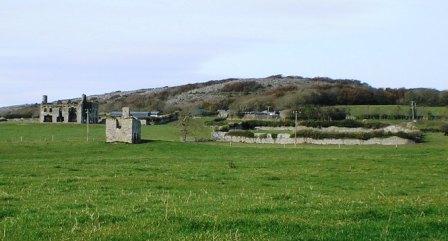
|
| Mount Vernon Lodge | Marked on the first edition Ordnance Survey map this house belonged to William Joseph Skerrett who held it in fee at the time of Griffith's Valuation. It later became the holiday home of Sir Hugh Lane's parents and then of Lady Gregory who entertained well known literary figures at the house. Mount Vernon is still extant and used as holiday accommodation. |
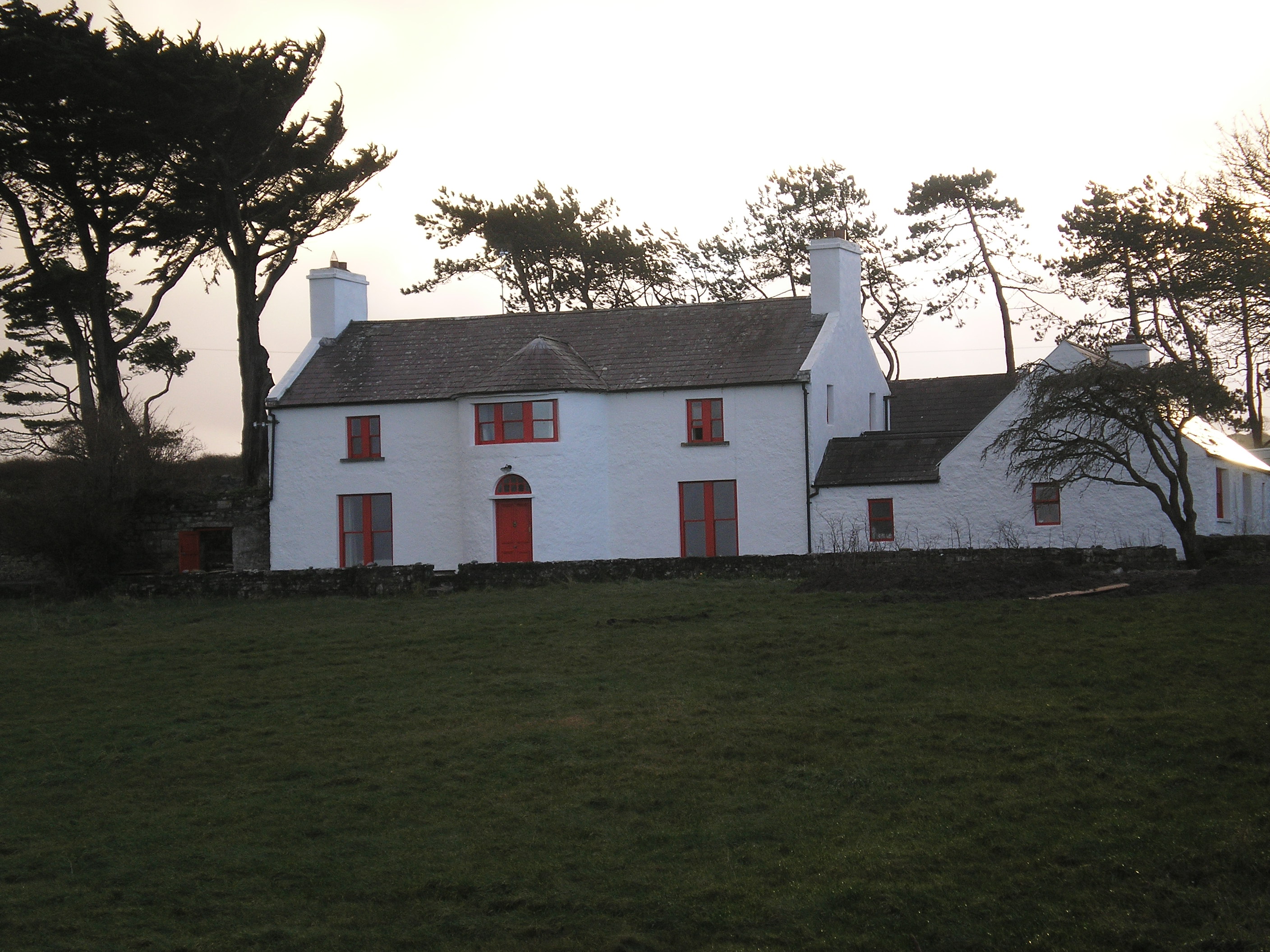
|
| Ballyallaban | Occupied by Michael O'Brien in 1814, J. O'Brien in 1837 and by Michael O'Brien at the time of Griffith's Valuation. The house and over 700 acres was held from Colonel Henry White. | |
| Gregans Castle/Cregans Castle | Gregans Castle/Cregans Castle The home of the Martyn family from at least 1837, now run as a hotel. Valued at £10.5 shillings at the time of Griffith's Valuation. |
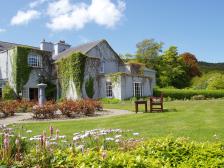
|
| Rathbaun | Home of Simon P. Creagh in 1814 and of his son Pierce Creagh in 1837. Occupied by John Hickey at the time of Griffith's Valuation who held the house from Pierce Creagh. The house is no longer extant. | |
| Ballybaun | Valued at £12.10 shillings at the time of Griffith's Valuation and occupied by Patrick Cahir senior, who held it from Francis Fitzgerald. It is labelled Ballybaun House on all of the Ordnance Survey maps. A house is still extant at the site. | |
| Kilcarragh | The home of the Fitzgerald family in the 18th century. Occupied by Austin Kerin in 1814, the Kerins and Fitzgeralds intermarried in the 18th century. The house was valued at £5.10 shillings at the time of Griffith's Valuation and was occupied by Richard Davis who leased it from Francis Fitzgerald. Demolished in the mid 20th century. | |
| Ballyshanny | A house on the McMahon estate occupied by Patrick Killeen at the time of Griffith's Valuation and valued at £11. Located close to the ruins of Ballyshanny Castle it is labelled Ballyshanny House on the 1st and subsequent editions Ordnance Survey maps. Ballyshanny is still extant. |

|
| St Catherines | Marked on the first Ordnance Survey map as Gortaclob House and on the later 25-inch edition as St. Catherines, this house was occupied by Francis McNamara Calcutt in the mid 19th century, valued at over £20 and held by him in fee. It is no longer extant. | |
| Ballykeel | The home of the Lysaght family in the late 18th century. Weir writes that the house was built by George Lysaght who was resident in 1814. Lewis refers to Ballykeale as the seat of the Lysaght family 'now occupied' by Mrs Fitzgerald. The Irish Tourist Association file records that the house became the property of Henry Comerford in 1839. It was unoccupied at the time of Griffith's Valuation and held by Henry Comerford. It passed from him to the Blake Fosters. Francis O'D. Blake Foster was the owner in 1906. Mrs Blake Forster was resident in the 1940s and the Irish Tourist Association file lists the paintings in the house. |
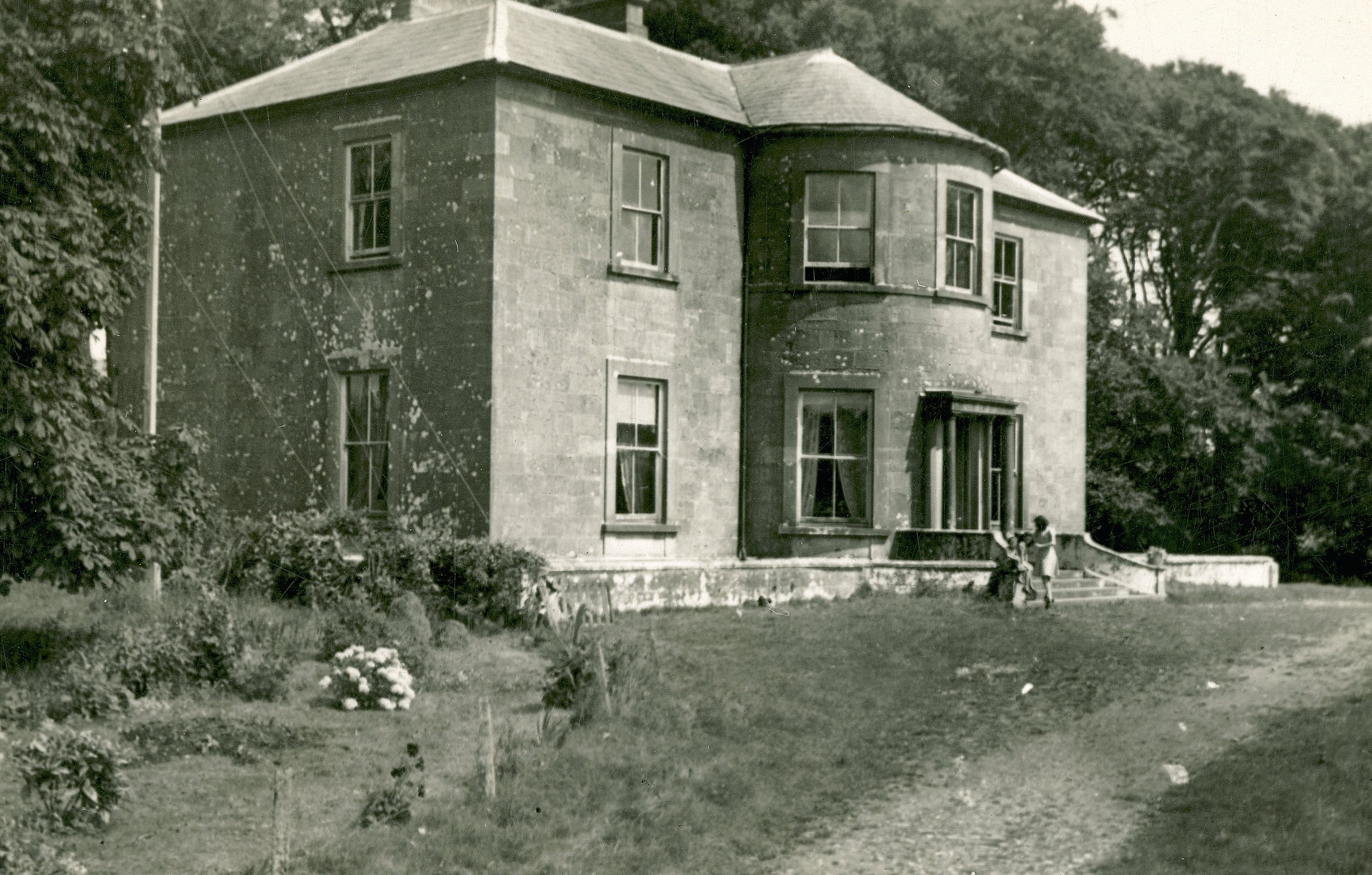
|
| Sans Souci | A seaside residence, occupied by the Reverend John Westropp in 1814 and 1837, rector of Ballyvaghan. It later belonged to the Comyn family, now demolished. |
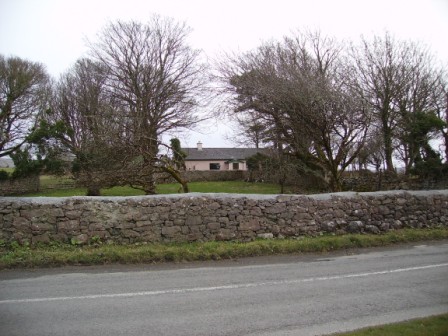
|
| Ballynalackan | Lewis writes in the late 1830s that Ballynalacken Castle was about to be repaired by the proprietor J. O'Brien. Weir writes that John O'Brien built a house near the old castle in 1840 and the O'Brien family lived there in the second half of the 19th century, however there is no house in the townland of Ballylacken valued at more than £2 at the time of Griffith's Valuation and no indication that the O'Briens were resident. The house was bought by the O'Callaghan family in 1939 and is run by them as a small hotel. see http://www.ballinalackencastle.com/index.html |

|
| Clareville | Weir writes that this house was built by a member of the Joynt family, one of whom was agent to the White estate in the early 19th century. It was valued at just over £5 and was unoccupied at the time of Griffith's Valuation. James and Michael Comyn were the immediate lessors who held over a hundred acres from Colonel Henry White. Clareville was one of the residences of William Lane Joynt in the latter half of the 19th century. An occupied house still exists at this site. |
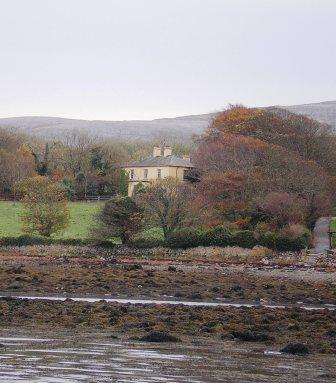
|
| Holywell/Hollywell House | A Comyn residence, George Comyn married Margaret Lysaght of nearby Ballykeale in the early 19th century. In 1814 occupied by George Comyn and in 1837 by T. F. Comyn. By the time of Griffith's Valuation the house was unoccupied and valued at £5, James Gibson was the immediate lessor. The house is still extant and occupied. |
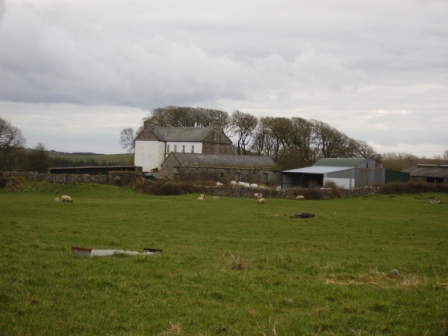
|
| Smithstown | Both Taylor and Skinner and Lewis refer to Smithstown as a seat of Viscount Powerscourt in 1778 and 1837. John O'Brien held the house and 117 acres from Edward Wingfield Stratford at the time of Griffith's Valuation. Weir writes that the house was demolished by the Land Commission in the 1940s.. | |
| Cartron | A 19th century house used as a summer residence by the Brady/Brady Browne family, now a ruin. | |
| Glencolumbkille House | This was an O'Brien home from at least the late 18th century. In 1837 Lewis described Columbkill Cottage as the "neat residence" of Terence O'Brien esq. Griffith's Valuation records Mary Anne O'Brien (the widow of Terence) as the occupier holding the property from John Kirwan. The buildings were valued at over £10. In the 1870s Morty O'Brien of Glencolumbkille owned 396 acres in county Clare. This is house is no longer extant. | |
| Lismoher | Weir writes that this is an 18th century house. It was the home of the Armstrong family. Occupied by Michael Hynes in the 1850s and valued at £4. Hynes held the property from Edmond J. Armstrong. The house is still extant. |
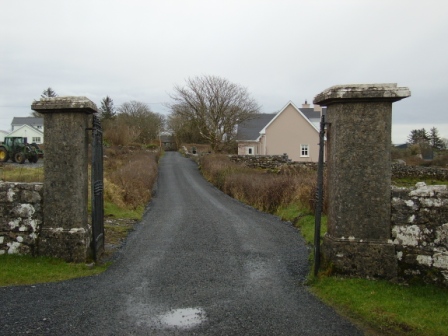
|

